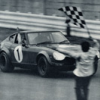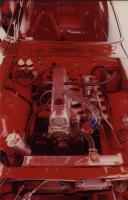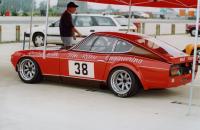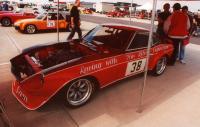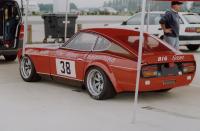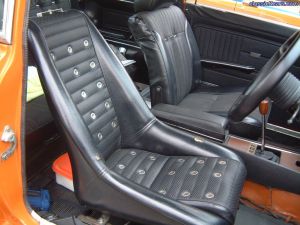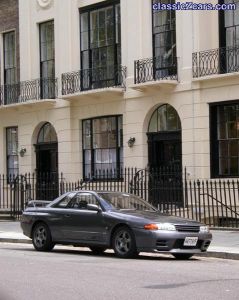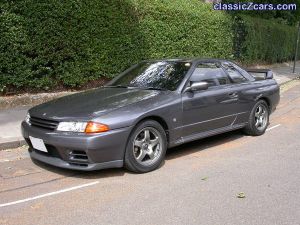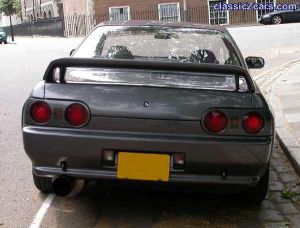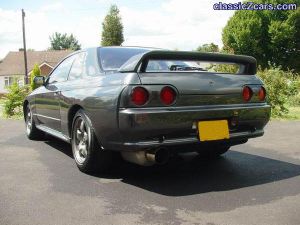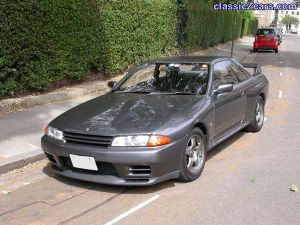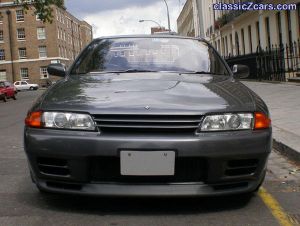Everything posted by HS30-H
-
Was the 240z designed for America?
Hi Vicky, I think the routing of the exhaust system was always going to be that way because it followed on from the fact that the L20, L24 and S20 engines all have exhaust manifolds on the left side of the car ( viewed from the driver's seat ). If you think about it, there are many other RHD-biased details on the cars too. Matsuo san told me that Nissan's engine layouts followed-on from the Austin configuration that they started assembling in the post-war period. With Austin being a British manufacturer, these were - of course - naturally oriented to the RHD layout. Its that "Designed as a right-hand-drive vehicle" quote that causes many disagreements. I think its clear that the first-generation S30-series Z cars were designed to take both RHD and LHD variants into account, but the fact that many components and much of the layout was naturally biased towards Japan's own RHD market is hard to argue against. Designing a product like a car, and especially a car that is to be sold at a competitive price in several different markets, is always a compromise. "Design Concession" comes into play, and the designers can't always have the final car exactly as they would ideally like it to be. Any bias to RHD layout and configuration is understandable, given the circumstances. Denying that is - in my view - fairly Quixotic. There are still a few Don Quixotes out there in the 'Z Community' though. Alan T.
- Big Sam
- Big Sam
- Big Sam
- Big Sam
-
Was the 240z designed for America?
Hi Halz, I think the way that the question is asked is important........ There's a loophole there that can be exploited by people who want to see things in a certain way. Personally, I would prefer to ask the question: "Was the S30-series Z designed for the American market?". That's a different question isn't it? I think that's where Matsuo san is usually very diplomatic and fair, and of course - as the chief designer of the S30-series Z - realises and remembers that the "240Z" is only one part of the story of the first-generation Z cars. I would say that there is no doubt that the "HLS30U" was aimed primarily at the USA / Canada market, but the version of the S30-series Z that was aimed at that market was NOT the whole story of the Z car, was it? Close analysis and comparison of ALL the first-generation variants shows that certain details and features were included in the design specifically to cater for the fact that this was to be a "World Car", and that several different versions / variants were to be made from it. However, certain parts of the design were naturally oriented to the fact that the car was 'born' in an RHD-oriented country, and shared components with other primarily RHD models. To ignore or discount this is just plain silly. I tried to make the point about the handbrake positioning to Mick Walsh of Classic and Sportscar Magazine a few months back when he was writing an article comparing the Z33 with the S30 ( of course, it ended up being '350Z' compared to '240Z' as usual ) but unfortunately he didn't follow it through in the article. I pointed out to him that the handbrake on the S30-series Z was always on the RIGHT side of the tunnel regardless of LHD or RHD, and that the handbrake on the Z33 is always on the LEFT side of the tunnel regardless of LHD or RHD. I think that says something. It doesn't spoil the experience for most people, but it still says something. Most telling is that Matsuo san wanted to have two positions for the handbrake - to cater for both RHD and LHD markets - but the bean-counters would not let him do it, and they chose the RHD positioning as the 'default'. Alan T.
-
240z weight
Don't forget that the Works rally 240Z's were fitted with 100 Litre fuel tanks. They even stepped up to 120 Litre tanks later. Imagine the weight of a full tank........... They also - usually - carried two spare wheels and tyres, and some extra kit on the back. Probably safe to say that precise weight distribution / corner weighting was not a priority on Works rally cars of that period.
-
Datsun competition bucket
Yes - its one of the 87000-U0175 "Datsun Bucket" / "Datsun Competition" seats. My point was that it was offered as an option on many other Nissan models than the S30-series Z cars, and certainly not just the 432R.
-
R32 GT-R
Hi Lachlan, Yes - the price was so reasonable ( from a friend ) that I couldn't say no. I've already sorted some small issues that it had ( Air Flow Meters ) and will do some more maintenance and cosmetic work on it before - hopefully - selling it on.
-
R32 GT-R
Hi Carl, Yes, its mine - at least for a while anyway. Funnily enough, I've been driving it more sensibly than I usually drive my Alfa.
-
R32 GT-R
Hi Lachlan, Yes - the previous owner in Japan de-badged the rear ( maybe for a little bit of 'stealth'? ). And actually, the exhaust is not all that noisy. Its an HKS 'Super Drager'. Bought it from a friend here in the UK who imported it, and we know the Japanese dealership it came from.
-
Engine Bay Inspection Lamp Markings
@ 26th-Z. Dazza, Would like to see those Japanese characters if you can take a photo of them and post it? Cheers, Alan T.
-
R32 GT-R
Ben, if you come over to London ( and bring an International Driver's License with you ) you can drive both the ZG and the GT-R.
-
R32 GT-R
-
Engine Bay Inspection Lamp Markings
Confused as a result of having it explained "so well"?
-
Big Sam
Hi halz, Maybe the best thing to do would be to contact the owner - Nick Howell. He is a member of this forum and has the username "Nick H". I'm afraid that there is nothing on the web - to my knowledge - that gives current or completely accurate information on the car. That's why it would be best to ask Nick himself. I'm afraid that much of the published historical information about the car ( or more accurately, cars plural ) conflicts in detail. It can be very confusing and somewhat annoying. For example, the second bodyshell used on the car ( that's the current bodyshell ) has often been described as being the car that Shekhar Mehta used on the 1972 Safari Rally. Unfortunately, this is impossible as that car ( carnet registration number "TKS 33 SA 4540" ) was RHD and the current shell used on "Big Sam" was originally LHD, and only converted to RHD after it was acquired by Bob Gathercole. The car actually has an "HLS30" ( ie LHD ) VIN prefix. They cannot be the same shell. The formerly used bodyshell ( that of Rauno Aaltonen's 1970 RAC Rally Works entry ) has been described as having the VIN prefix "HS30LW" ( the "LW" part - supposedly - standing for "Light Weight" ), which is total bollocks of course. The VIN prefix on that car was just "HS30".......... Nick has been digging into the history and intrigue of the car lately, and I've been corresponding with him about it. I think I have a very good idea about what the current bodyshell's last two events in Works hands were, but I'll leave it to Nick to update interested parties on that - as its his car. It would be refreshing to see an accurate and properly researched history of the car ( cars ) published one day. It certainly deserves it. Alan T.
-
Engine Bay Inspection Lamp Markings
Add 25 to get the equivalent Western year from a Japanese Showa-era date: 1969 = Showa 44. 1970 = Showa 45. 1971 = Showa 46. 1972 = Showa 47. 1973 = Showa 48. Showa 43 would be 1968, so not very likely to be seen on a Z - but on the other hand the "Trouble Light" / "Wander Light" / "Inspection Lamp" was used on other Nissan models too - so you never know........... The reign of Emperor Showa started in 1925 ( Showa ichi-nen, or Showa year one ) and finished with his death in 1989. 1989 was the first year of Emperor Heisei. We are in Heisei 15 now ( I think ).
-
Datsun competition bucket
Ben, The 87000-U0175 "Datsun Bucket" seat ( Datsun Bucket being just a nickname - not an official term ) was not specific to the 432R. The 432R came from the Factory fitted with the lightweight cloth-covered FRP seats made by 'Ikeda Bussan' ( and have been known by that name in Japan ever since ). The Ikeda Bussan seat was more commonly fitted to the true Works race and rally cars, and the Datsun Bucket was offered in the Sports Option lists for many models as Nissan's generic sports seat. The U0175 was used on many of the 4-cylinder Works rally cars, and was manufactured over quite a long period - with some changes along the way ( hence the difference you noted in the headrest attachment ).
- R32 GT-R
- R32 GT-R
- R32 GT-R
- R32 GT-R
- R32 GT-R
- R32 GT-R
-
Big Sam
Nissan achieved more than 200 BHP themselves on all of the Works rally cars which used the L24 engine block, and in fact its fairly simple to get this kind of power. Nothing much to do with 'Samuri' there, especially as the cars we know as "Big Sam" started out with what were - essentially - Works rally car engines. The currently fitted engine is not a Spike Anderson-built unit, and does not utilise an L24 crankshaft. Tim Riley has to take credit for the car's current build and preparation, which is to an excellent standard - like most of his work. He's living and working in New Zealand at present.




